We visit the Giant Buddha statue that our reporter dubs “kawaii” and “like a mascot character”
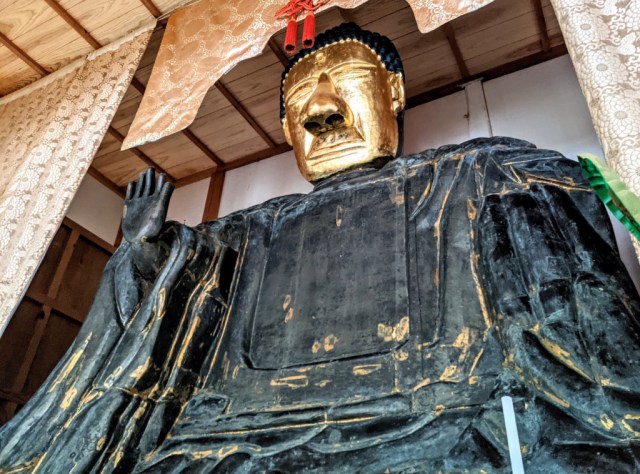
The Arifuku Daibutsu in Shimane Prefecture is free for viewing by the public.
Arifuku Onsen in Gotsu, Shimane Prefecture is a sleepy little hot spring town with an unexpected symbol. Our Japanese-language reporter Masanuki Sunakoma had heard some interesting rumors about the Arifuku Daibutsu (Giant Buddha of Arifuku/有福大仏) and recently decided to pay it a visit for himself.
▼ Sign for Arifuku Onsen, Gotsu City
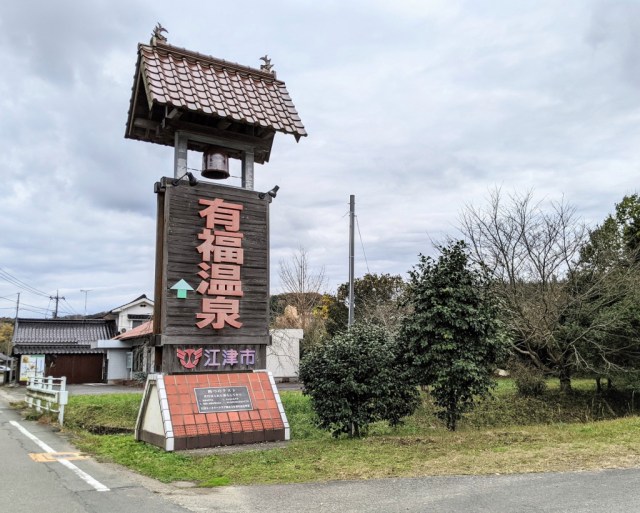
First of all, Arifuku Onsen boasts over 1,350 years of history. The hot springs were supposedly discovered in the time of Prince Shotoku (574-622 CE) by a semi-legendary sage and are known for their skin-healing restorative properties. Just as the auspicious kanji in its name suggest, good fortune is said to be found here.
▼ The townscape itself has a retro feel where time seems to have stopped.
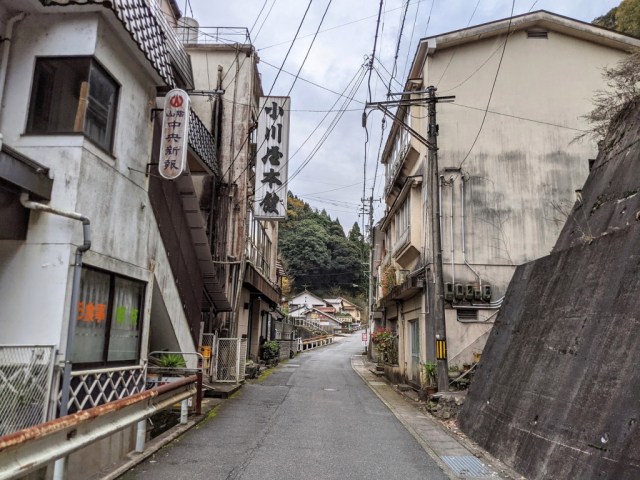
The prevalence of stone steps leading to various places around town is often likened to Ikaho Onsen in Gunma Prefecture and therefore the town is sometimes called “Ikaho in the shade of the mountain.” Of particular note is that visitors can also enjoy viewing the local Iwami version of kagura, a type of traditional Shinto ceremonial dance (remember that dance scene in Your Name?). As Masanuki was musing over such things he spied a sign that pointed him towards his destination.
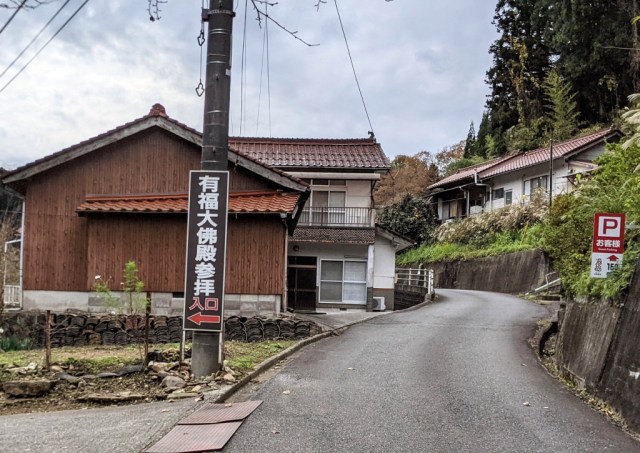
The Arifuku Daibutsu is housed in a small temple on elevated ground. At the time of his visit the building was surrounded by the gorgeous hues of autumn.
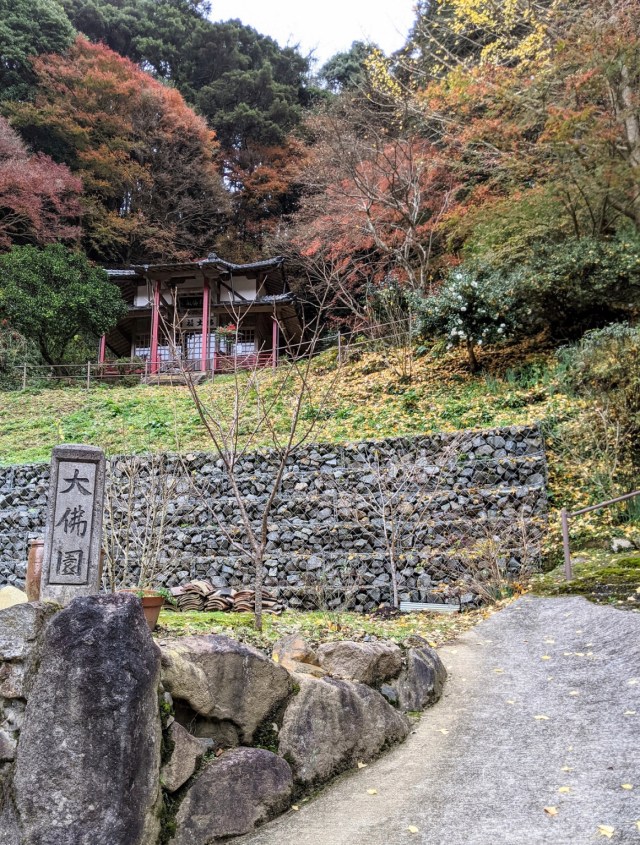
A path of moss-covered stone steps cloaked with fallen ginkgo leaves led the way up a small hill while further setting the atmosphere. (Be careful not to slip at this part.)
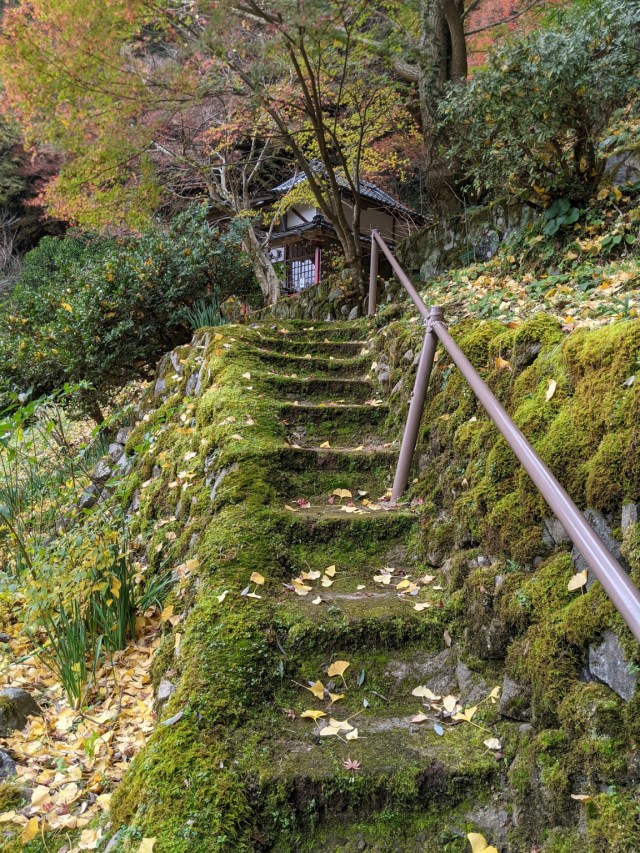
Masanuki caught his first glimpse of the full building at the top.
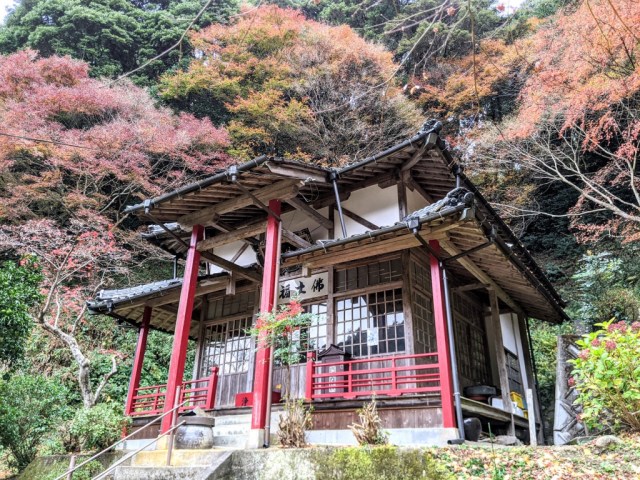
The temple’s doors were closed but a sign welcomed him to go inside.
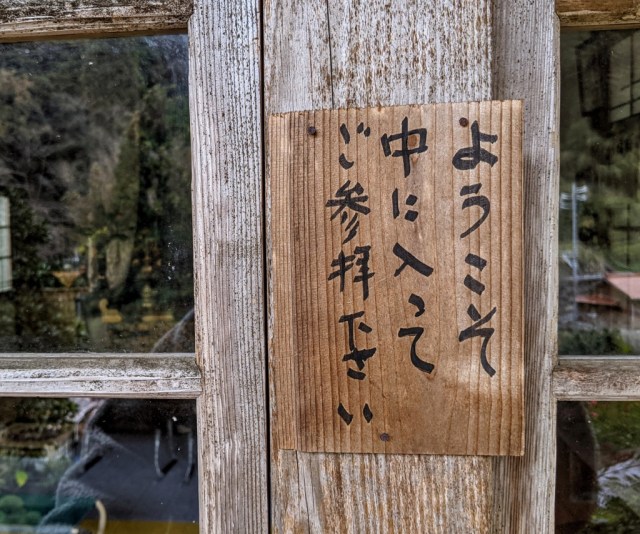
Behold the moment when he pushed open the doors…
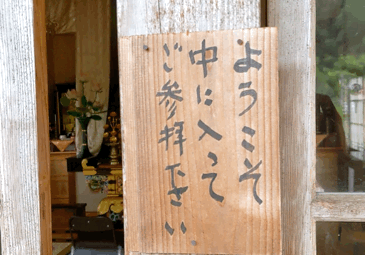
…and was greeted by the shiny gold face of the resident Arifuku Daibutsu.
▼ Excuse me, sir, you’re looking a bit gold in the face.
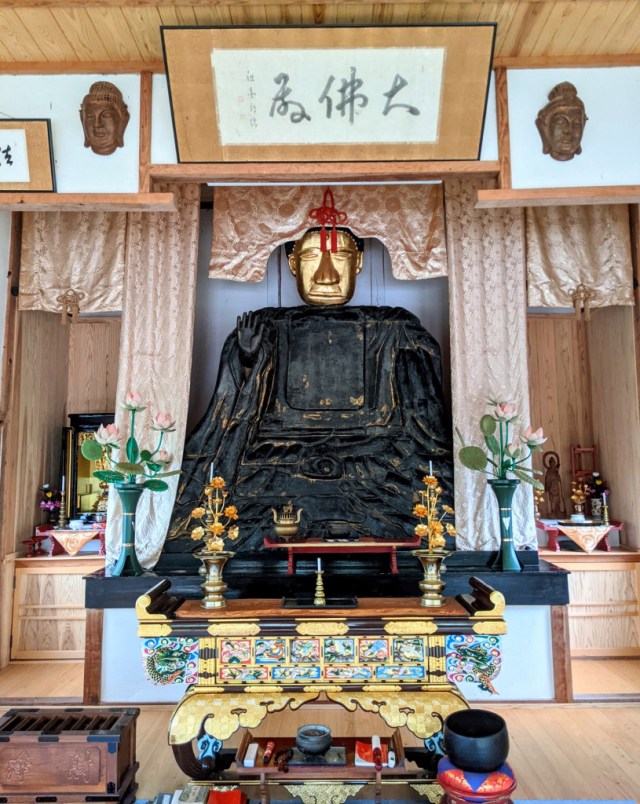
What a very unorthodox-looking Giant Buddha indeed. However, Masanuki felt a particular affinity for the statue’s unique face as if it were someone he actually knew and not an ancient relic. Its rather simple expression contrasted with the luminous gold coating and the word that came to his mind was–dare he say it–kawaii, or cute. The longer he stared at it, the fonder of its appearance he became.
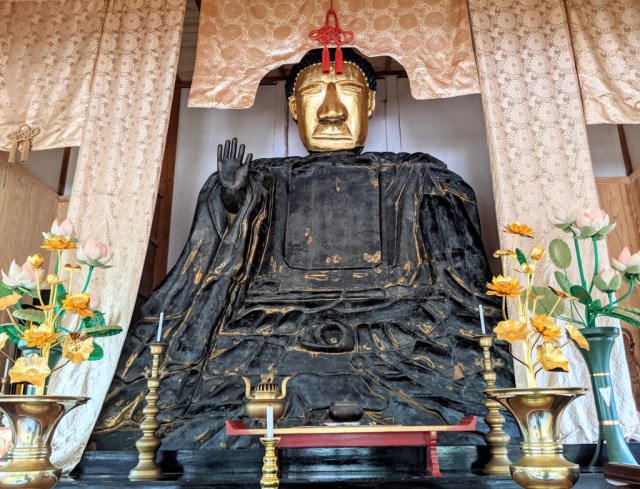
From what he’d heard, the statue had been carved from a large camphor tree. Despite being approximately three meters (9.84 feet) tall, it wasn’t intimidating at all but rather gave off a sense of welcome. Its calm expression also lent a certain sense of peace to the viewer. All in all, Masanuki had the feeling that its appearance was closer to one of the ubiquitous mascot characters (yurukyara) found throughout Japan than anything else.
▼ The Arifuku Daibutsu: A cousin to the likes of Kumamon and Funasshi?

Masanuki closes by mentioning that someone who made a wish to the Arifuku Daibutsu to win the lottery actually won a large sum of money. Perhaps we should all pay it a visit before the end of this month to pray that next year will be better than this one–or at least to save the beloved mascot characters in the wake of the coronavirus.
Images © SoraNews24
● Want to hear about SoraNews24’s latest articles as soon as they’re published? Follow us on Facebook and Twitter!
Credit:

0 comments:
Post a Comment